
“Before the island, there were the elements. Fire, Air, Steam, Earth, Dust, Life, Smoke, Ice, Water, and Light. Given form in the Primordials, each fundamental lived separate, but in harmony. All but one.
Shadow, the eleventh element, was hungry. It would not rest until all were like it. And so a long and terrible war was fought by the Primordials – led by the greatest among them, the Colossi.
Upon witnessing the destruction inflicted upon their people, the Colossi, in their wisdom, drew on their combined strengths to forge a new world. A safe haven, that would last to protect and shelter until peace was won.
Thus came to be Tirkosu: A crafted island holding all ten elements in bountiful choir. And for many years, while the Primordials battled threats such as Nekrahtrox and Tiamat, their people prevailed. In time, the war was won, and many islanders returned to their elements. Tirkosu was all but forgotten.
Forgotten, but not lost.” -Flamer.
Rahm Oru
“Some call Rahm Oru “New Orthraze”, and I can understand why. Despite its small size it has become a gathering ground for all types of cultures and races, living together beneath the careful eye of the Human oligarchs. This worries me. Will history repeat itself? Can the Humans finally put aside their greed, or will the city suffer the same fate as its predecessor?” – Flamer.
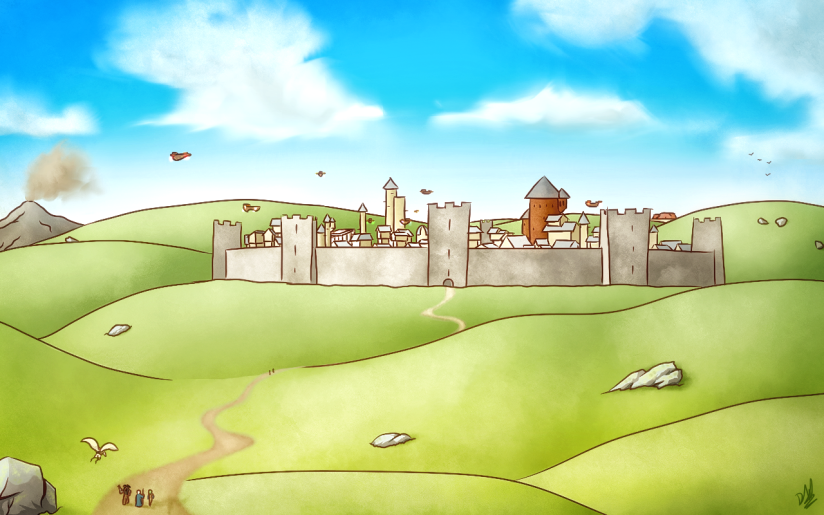
While it can never hope to reach the same level of grandeur as Orthraze thanks to its comparatively small planestable zone, Rahm Oru is certainly doing its best. The walled city sits on a plateau overlooking luscious green hills, and it reaches for the sky with its airship docks and imposing towers. Many think of it as the true human hometown out of all their settlements; even including Gokapu.

Rahm Oru is the centre of trade on the island and a common meeting ground for guilds of all kinds. Within the busy (and occasionally claustrophobic) streets you find outposts for every faction, secret or otherwise. Some even have their headquarters based in the city. The Brotherhood of Arcane Tinkerers has repurposed the extensive catacombs winding beneath the streets as a hidden laboratory for all their experiments, both licit and illicit.

If Little Orthraze is where the technology is invented, Rahm Oru is where it gets put to use. Golems cart massive tomes around the city’s famous library. Senders cast messages off to others villages in their network, allowing news to travel faster than ever before. Airships ferry goods to every corner of the island, and youngsters speed above the streets on smaller, bicycle-like aircraft. Everywhere you look in Rahm Oru you can see the influence of technology.
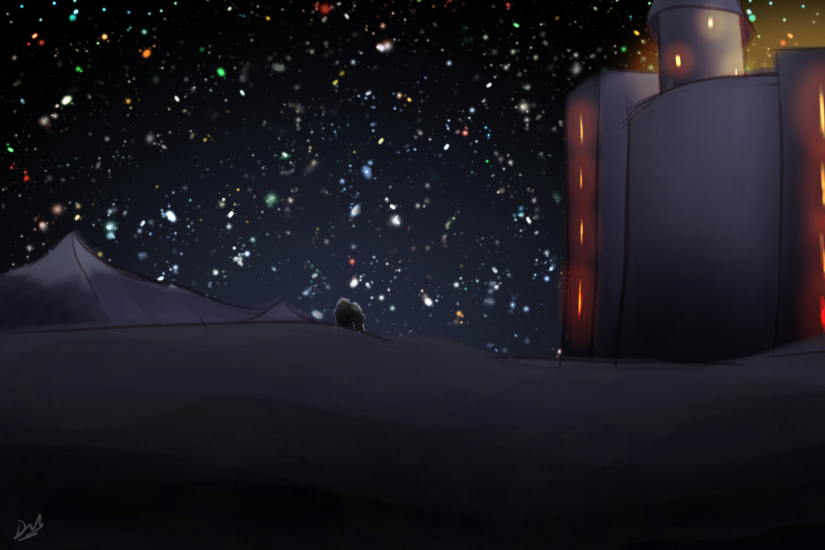
The racial diversity is another striking feature of the city, especially since the invention of Permanent Interplanar Portals. Now that PIPs have made Tirkosu a hub for those wishing to travel between planes, Rahm Oru has become a kind of stop-off point for all kinds of people. Planeborn, genies, and even elementals can be found staying the night in the city, some with cargo waiting in the airships above, some enjoying the “culture in a bottle” feel of the town, and some simply passing through on their way to visit a new plane.
Little Orthraze
“Little Orthraze… I remember that pleasant village with a mixture of feelings. On those very sandstones were forged the oaths that would, some day, be taken by each new Tsethem. However, much blood was also spilt there, alliances shattered, and light consumed. Still, even when frozen in a winter most Golath would quail at, the ingenuity of the Gnomes kept their home alive and well. I am truly thankful for the peace that has graced it these last few years, and I pray to the Supreme One that it will last.” – Flamer.
Little Orthraze was merely a simple port before the destruction of its larger namesake, after which it became one of the most high-tech locations on the island. A sunny village built from limestone rock and looking out over a sweeping seafront, the Gnomish hometown is possibly one of the nicest places to live on the island. The innovation of its inhabitants means that every convenience is at their disposal; running water, indoor heating, a sewerage system, and a multitude of airship routs.
There is always something happening in Little Orthraze. Whether it be the unveiling of a new invention, the birthday of a council member, or a festival celebrating the new year (or month, or week), the Gnomes will find any excuse to fill their town with noise and cheer.
Karu Sampur
The former Warforged village is a series of caves dug into the volcanic rock, the entrance of which is capped by the wreckage of an airship from the Great War. In their time the Warforged’s magitek prowess matched and even exceeded that of the Gnomes, and many believe that the caves still hide a wealth of arcane knowledge within.
Recovery of such knowledge is far from easy, unfortunately. The last chieftess of the Warforged was Veetoo, a xenophobic Tiamat worshiper who believed her race to be superior. She left incredibly powerful wards and magical traps to keep the other islanders out, enough to deter all but the most persistent explorers.
These days Karu Sampur acts as a memorial to those slain in the Bloodless War. A literal monument stands outside the airship’s breach, depicting the last Warforged himself.
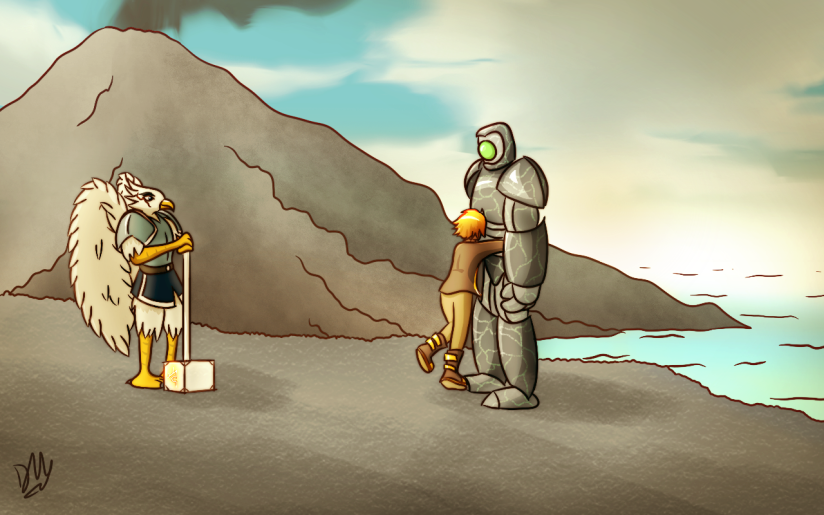
Sovu Vapohu
“In all my time on the island of Tirkosu I never actually set foot inside the home of the Dwarves, despite knowing its creator personally. The truth be told, I was preocupied with the safety of my own kind when Turf was Tsethem of the village, and when she left… Well, it is enough to say that the Dwarves have never be the most welcoming folk.” – Flamer.
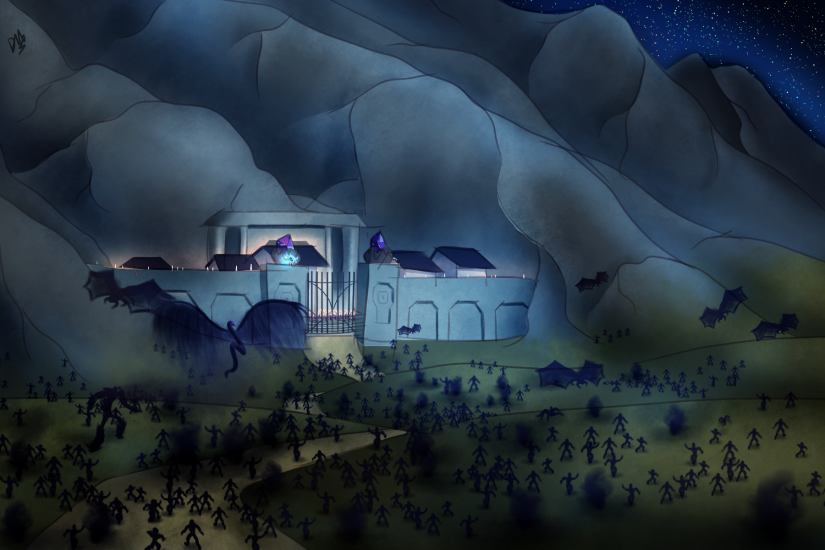
Very few things have been known to create planestsable areas – one of which is the raw elemental power of a Tsethem. The Dwarven village of Sovu Vapohu (an elvish name meaning “safe haven”) was carved into the foothills of Mt. Tirkosu by Megan “Turf” Bridgewater, protector of earth. Ornate grottos are chiseled into the side of an expansive cavern near the surface, and also along the tunnels extending several miles into the mountain.
The Dwarves don’t appreciate visitors, preferring to keep to themselves. Travellers have very limited options when visiting Sovu Vapohu: only a single inn provides lodging in the main cavern, and while entering the tunnels isn’t prohibited, it is frowned upon.
The entrance to the village is fortified by an angular stone gateway that swings shut at night. A constant watch is posted outside to keep an eye out for the frequent Mirling raids.
Pehkeiai
“Given my size and mechanical composition, the Merfolk were wary of letting me onto the comparatively flimsy bamboo rafts that made up their home above the sea. They insisted we meet beneath the water instead, and for that I am glad. Never in my travels, not even in the City of Fire or the Astral Plane, have I ever glimpsed a more entrancing sight than the vibrant coral beds below the waves of Pehkeiai.” – Flamer.
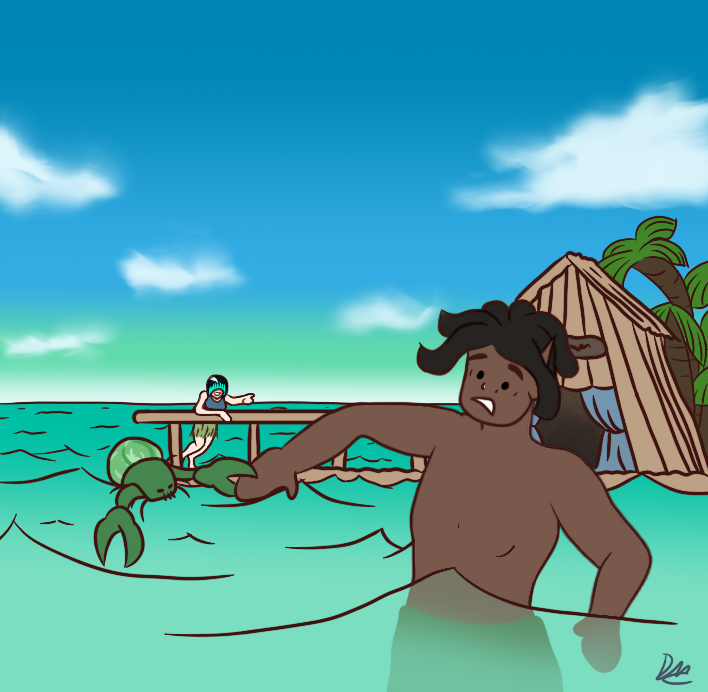
Coral formations shaped like small volcanoes peek above the clear blue waves on Pehkeiai Beach, next to which float bamboo huts on sturdy rafts. The Waitanga live inside the coral, which ensure protection from sea predators by way of requiring legs to climb into the “craters”. Pehkeiai homes are effortlessly beautiful in their simplicity, which mirrors the mindset of their inhabitants. They are the wealthiest race on Tirkosu (barring Humans) thanks to their important contribution of fish, shellfish, and other seafood to the food supply.
Despite this, many Waitanga don’t see the point in gold, preferring to donate their earnings to causes such as the Brotherhood or Arcane Tinkerers, or Appinamopu Tharth. What reason would they have to keep it? The ocean gives them everything they could ever want.
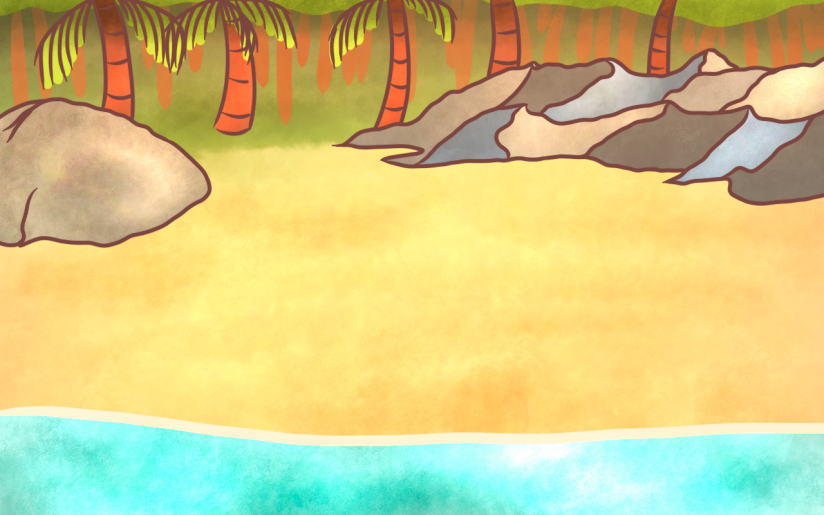
Hepthurai
“During my time as protector, my friends and I almost treated Hepthurai as a base of operations. The high vantage point meant we could easily navigate the Tower of Tsethem to any corner of the island with minimal trouble; and the wisdom of the elders was truly invaluable to our cause.” – Flamer.
Many visitors to Tirkosu confuse Hepthurai with Appinamopu Tharth, and with good reason; even disregarding their overcomplicated names, their peaceful mindsets and ritualistic way of life make them sound nigh indistinguishable. Of course, to the islanders the differences are obvious. While the Aasimar concern themselves with religious worship and productivity, the Aaracokra of Hepthurai have an unwavering focus on the betterment of oneself. Control over the body and mind are at the forefront of their philosophy, and the orderly layout of their village reflects this.
The village is primarily constructed from giant interwoven timbers, allowing the breeze to pass through almost the entire village. The multiple-eaved structures look similar to what a bird’s nest would look like if the bird in question was taking inspiration from Chinese pagodas. Training centres are sprinkled throughout the village, and meditations cells are carved into the rock face rising up behind the plateau. Griffon pens are stacked on top of each other like ramshackle towers, home to those mighty beasts that have been trained as steeds.
Those who seek to train their thoughts and hone their physical abilities are welcomed to Hepthurai, on one condition: technology must remain outside the village. The Aaracokra are not technophobic but they are wary about the influences of modern convenience. Many still remember the fall of Orthraze. They keep a close watch on Rahm Oru, waiting for a sign that the collapse of civilisation is once again imminent.
Appinamopu Tharth
“Had I not been so fearful of the public eye when I first gained my control over innate magic, I would have most certainly turned to the clerics at the Tharth for guidance. With the exception of Tiseo (an egregious exception, but regardless), every single Aasimar I have met has been a paragon of justice and peace. When in doubt, you can almost always trust a cleric of the Supreme One.” -Flamer.
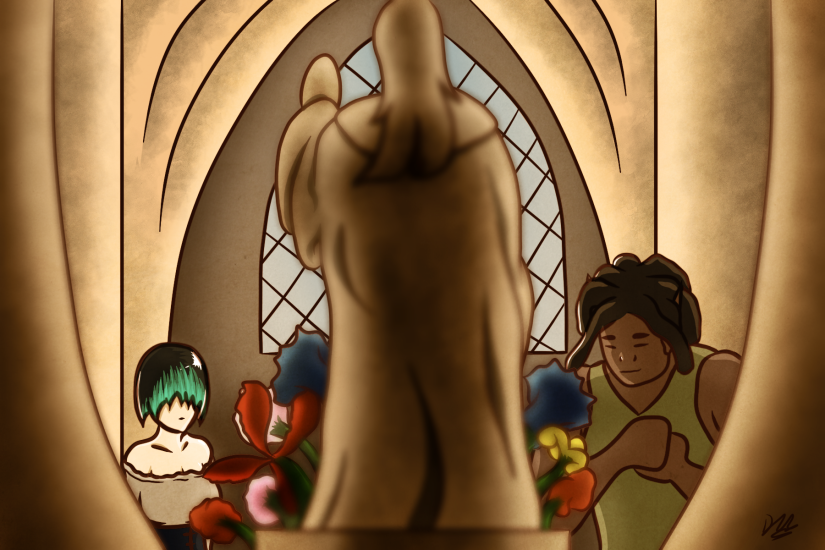
Built like a Greek temple, Appinamopu Tharth is situated on top of a large clearing rising between the border of jungle and forest. Fruit and small animals (such as chickens, rabbits, and deer) thrive within the extensive enclosed garden surrounding the awe-striking structure, while the fields outside the walls produce vegetables and wheat. Although the Tharth is not industrious in nature, the hard work and dedication of the Aasimar allow them to easily compete with the more modern farming techniques.
The Tharth, or temple, of Appinamopu is a building of such magnificence that its architecture rivals those of the ancient dwarven cities beneath the island’s centre. Giant pillars of carved white rock rise to support its vast, intricately detailed roof. As the centre for all religious practices dedicated to the Supreme One, it is also where the sick and needy gather for healing and help. One can find true peace in the quiet walled gardens, or advancement of skill in the extensive training quarters. The Tharth is a place of study and worship, but also of defence against all that seeks to snuff out the light.
Gokapu
“Gokapu can be seen in two lights. From one perspective, it is a testament to the resilience of the Humans, and proof that they can survive despite the comforts of modernity. From another, it is the product of greed and desperation, a punishment from the heavens for those who would aspire for total control.” – Flamer.
Gokapu is little more than a collection of tumbledown shacks set up in the safety of a winding canyon. Sand and dust permeate everything, from the huts, to the food, to the complex mining equipment. The day is scorchingly hot, while the nights are bitterly cold. Not even the peaks of Mt Tirkosu can compete with the harsh nature of the desert, but despite that the humans still manage to make a life for themselves there because of a simple reason: oil.
The black gold lying trapped beneath the ground originates from the plane of dust, and is highly prized by the islanders in comparison to whale oil. Because of the regenerative nature of Empai Tirkosu’s geography, it enjoys a steady supply of petroleum that may well be be infinite. Unfortunately this also means the mines are constantly being erased, causing Gokapu to have the highest planefall rate of any village.
Paku
“I always had a special respect for the Elves. Despite their tendency not to take sides when disputes between villages arose, they were always prepared to fight back when an exterior force threatened the peace. They knew how to choose their battles, unlike some more impulsive races. Perhaps this level-headedness is why many of the Supreme One’s prophets originated in Paku.” – Flamer.
Who hasn’t wanted to live in a treehouse before? It’s simply fun, and fun is what the Elves of Paku prize the most. Nestled high in the jungle’s sturdy trees, the minimalistic but comfy huts speak to the tribal nature of its citizens, while the complex elevator systems used to reach their homes demonstrate their ingenuity. Music and merriment accompany the workers as they dart from tree to tree, picking high-hanging fruit with no fear of falling thanks to their safety harnesses.
While the Aaracokra outright shun the influence of technology, Paku seamlessly integrates it into their society while keeping a healthy respect for nature. For example, although they use golems to lift heavy logs or drive away Mirlings, they recoil from using them to hunt animals in their stead; doing so would be disrespectful to their prey.
D’Okai
“I shall attempt to keep my writings on this particular area brief, as, given recent event, I believe my judgement towards the Elkore may be biased. For certain, their kind have been a quiet yet inspirational sort for many years. Nonetheless, it is also a fact that they have lost favour with the other villages due to their part in the war against the Warfirged. Who would have thought such a creative people would become so destructively violent when given a push?”-Flamer.
D’Okai is the place to be for aspiring artists, with its many workshops and gathering places for painters, dancers, and carvers of all sorts. Maestros from around the island gather to flaunt their creations in the Great Halls of Talent, while apprentices struggle to master crafts and techniques laid out by their instructors. From the ashen rocks in the southwest side of Mt. Tirkosu rises the entrance to the village; the Great Chimney. Standing at over two hundred feet tall, the intricately carved flue constantly emits smoke from the Everburning Thurible.
Several years after their disastrous role as the main antagonists in the Bloodless War, the Elkore elder declared their village a pacifistic zone in an attempt to win back the favour of the other villages. While it proved to be time instead of peaceful gestures that soothed their public image, D’Okai has nonetheless retained its strict no-weapons policy. Guards protecting the exterior of the colossal chimney are permitted to wield arms, but anyone attempting entry without surrendering their own will be driven off.
Tapuk
“The Golath and I have had our differences over the years. It is true that their elitist outlook does them no favours. But yet, I cannot disregard the sacrifices they made to protect my people, in vain though they were. They are indeed an admirable race, if somewhat conceited.” – Flamer.
The snow-capped log cabins that Tapuk consists of could be mistaken for a chocolate-box village in the alps, if it weren’t for the thick wooden stockade surrounding it and the frozen animal carcasses hanging in the porches. Any picturesque qualities the place might have are purely accidental, as the Golath have little appreciation for pleasant aesthetic.
Survival of the tribe is the highest priority in the Icefolk’s lives, but in their spare time they allow their collaborative mindset to fall back on one of competitive rivalry. Although fight clubs originated in Little Orthraze, they took off massively in Tapuk; and nowadays it’s rarer to find a Golath chilling somewhere other than the village’s various arenas.
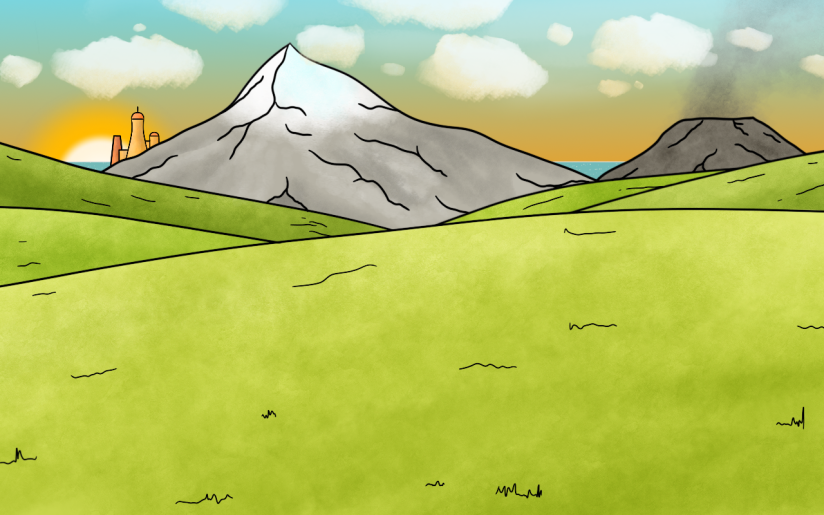
Other Locations
Cosapai
Hailed as Orthraze II when it was founded by Grand High Commander Thane, Cosapai was used as Tiamat’s headquarters during her months-long reign over the island. After the living weapon’s defeat and the realignment of the elements, Cosapai was left in much the same state as Orthraze; a sprawl of ruins steadily being reclaimed by nature. The biggest difference between the two is that scavengers are much less afraid of raiding Cosapai than the fallen city it was built as a successor of.
The Dark Mirror
Deep beneath Tirkosu lies a tangled mess of tunnels, caverns, and crevasses. Together they are the Dark Mirror; the home of the Mirlings. Smothered in unending shadow, these unforgiving caves twist and turn to mimic the shape of the island far above, earning them their name. In order to create Tirkosu the Colossi had to draw upon all the elements, including Shadow. But they didn’t want their creation sullied by the inclusion of the Shadowfolk, so they buried that particular area as far as they could. In theory this should have kept the Mirlings away from the surface for good. But Shadow is forever reaching to new heights, and soon there were sinkholes appearing in and around the grassier areas of the island. These sinkholes act portals into the Dark Mirror, and despite only lasting a few days before disappearing they still allow Mirlings raiders to access the surface. The Dark Mirror itself is a place of chaos and death. Everything wants to kill you. The Mirlings spend their time butchering each other, unless they are united under a leader willing to take the fight to the surface; in which case they eagerly prepare for war. The spirits and tormented souls of lost explorers plague the area, and even burrowing creatures such as bulettes and purple worms tend to avoid it; there isn’t much to eat excepting Mirlings and fungus.
The Dragonlands
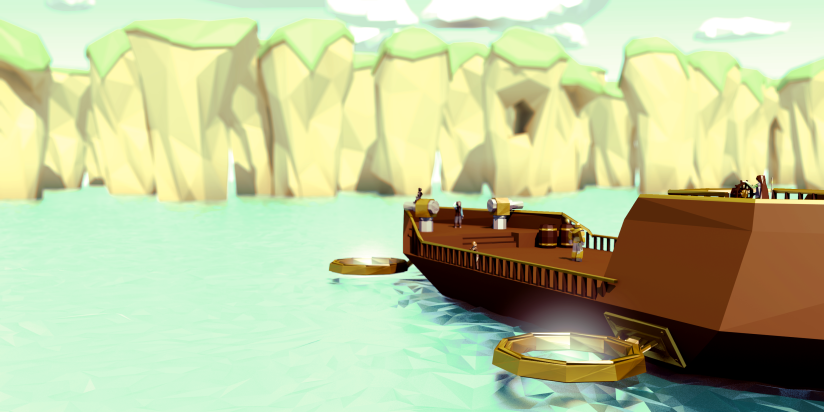
Far across the sea, down the Great Waterfall and lying on the opposite side of the world to Tirkosu, stand the Dragonlands. This massive circular landmass is roughly divided into ten regions. Each region is composed of giant elemental pillars, upon which live the Dragons and their smaller dragon Dragonborn kin. The Dragonlands are a lot more primal than the island “above” it. The many pillars have very little in the way of basic resources as they focus strongly on their individual elements, and the vast distances between regions means that trade is only an option on the borders. Both Dragons and Dragonborn live fairly rustic lives, with the former being only slightly more well off at the top of their treasure-laden pillars.
Orthraze
Only the largest stones and metal frames of the once glorious city remain. Half buried in the grass like great monoliths, they stand as testament to the fragility of even the greatest empires.
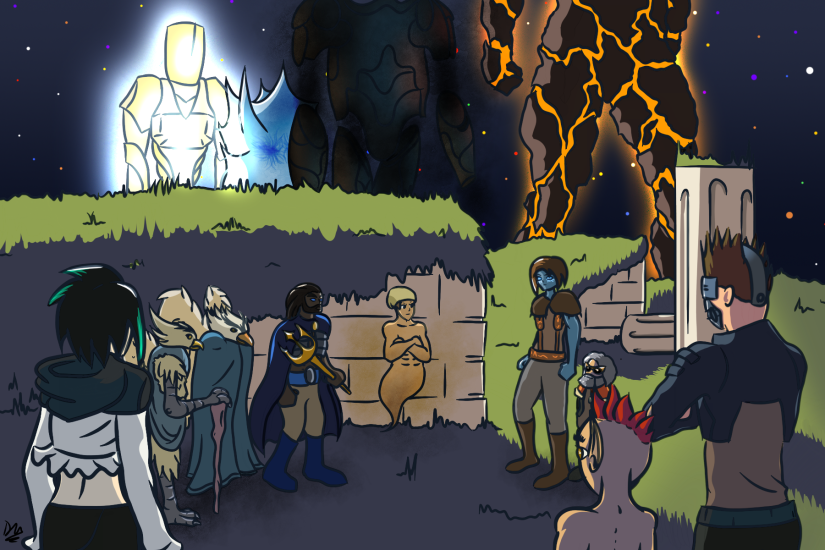
Although the area containing the ruins still remains the largest documented Planestable zone, moat of the islanders have been unwilling to rebuild on it or salvage the remaining fragments of history. While this can be chalked up to simple superstition, there is a practical rational behind their reluctance. Many still remember how Orthraze looked before the planar realignment in 28 AFO; a mass of twisted ruins seething with shadow energy, where one’s soul would succumb to the darkness if the endless Mirling swarms didn’t get to you first.
Pernep
“I entered into Pernep with an illusion disguising my true self, as I did not wish for word to spread that the Tsethem of fire had returned. A woodsman observed my transformation, but he swore to tell not a soul when I explained the situation. Upon the dawn of next day, every single Pernepian recognised me on sight.” – Flamer.
The southernmost human settlement is a far cry from the bustling towns further up the island. While in recent years it has seen a fair bit of growth due the effort of the Lightstep family, the rural village still retains a sleepy peacefulness that spreads throughout the pine forests and into the hills. The picturesque cottages at the heart of the village are often accompanied by farmer’s markets, while the grander mansions towards the outskirts act as second homes for the rich and elderly.
While similar in some ways to the farming communities dotted around the island’s center, the benifit Pernep gains from being situated in the forest isn’t limited to the ready supply of lumber; the south end of Tirkosu draws its energy from the plane of Light, meaning Dark Mirror sinkholes are all but unheard of.
Quartill
The human-built farming hamlet is inhabited by a single extended family of Dwarf-Humans, the Dewflowers. Without any proper defences against the Mirlings, they have to rely on the vicious fighting skills inherited from Ian Dewflower Sr.’s Dwarven side to hold them at bay. While their produce is undoubtedly quality, those with sharp ears might hear whispers that sweet potatoes aren’t the only thing the Dewflowers are growing. Indeed several of their fields are dedicated to the production of the forbidden substance dubbed Dreamroot, hidden from the public eye by illusion magic.
Rahg Krahv
Once a small fortified shelter among the ruins cause by Primadan bombings, the Golath-founded town is back on its feet thanks to the steady influx of travellers from across the planes. Those journeying across Tirkosu without the speed of an airship to aid them will most likely stop off there to replenish their energies and escape the Mirling attacks at night. Some people would call Rahg Krahv the poor man’s Rahm Oru, and in a way, they’d be right. But that doesn’t stop the village from putting their all into their work – the pride of the locals would never let them admit to being second best.
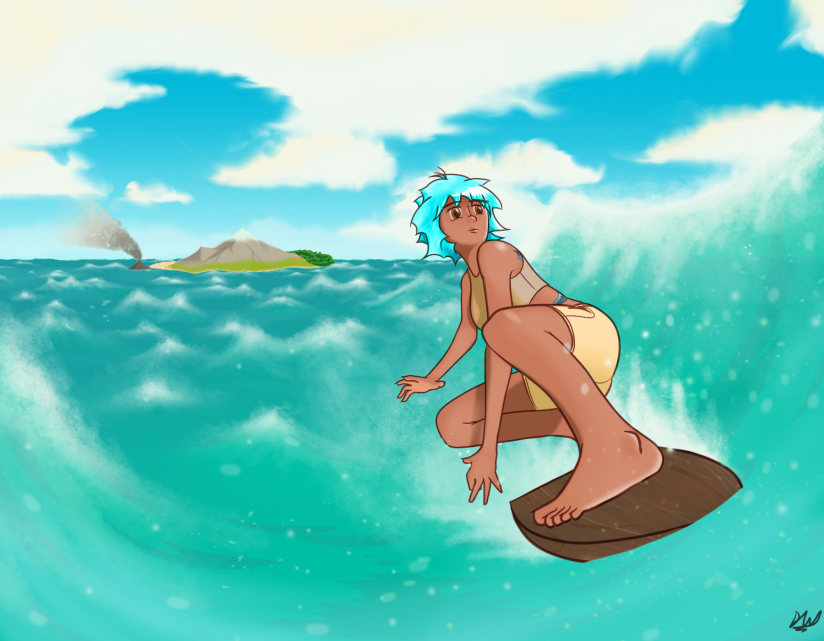
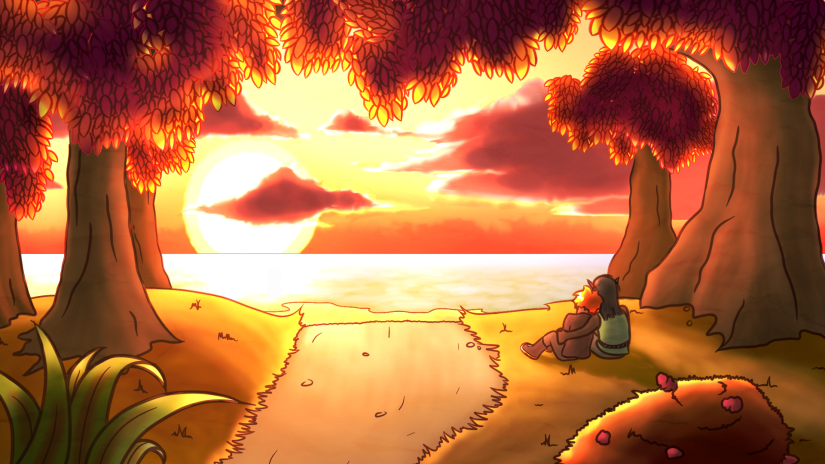

Just to be clear, what drug are the Dewflowers growing?
LikeLike
Dreamroot – a plant that when smoked induces a soporific state that allows the inhaler to lucid dream. Originally discovered by the Piranai (secretive druid people), the drug was banned during Orthraze’s golden years as its usage was becoming far too widespread. Rumour has it that even the Vindicus got hooked on the stuff, at one point.
LikeLike